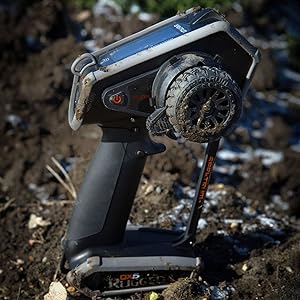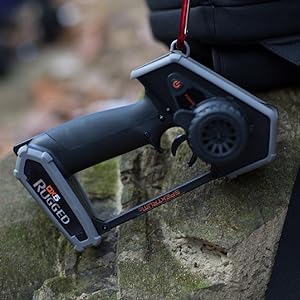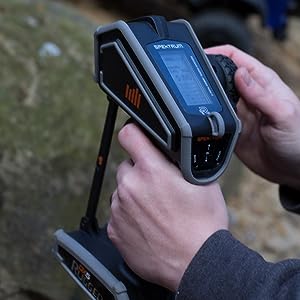RC cars are popular remote controlled vehicles that provide hours of entertainment. Controlling the speed and direction of these nimble racers is made possible by a handheld RC transmitter. These transmitters send radio signals to the receiver on the car to operate the motors and steering. With different types of RC cars like on-road, off-road, and drift cars, there are also various kinds of compatible transmitters to choose from. Key factors to consider are operating frequency, number of channels, transmit power and control range. This guide will provide an overview of the different types of RC car transmitters, their key specifications, how to choose the right one, and tips for proper usage and maintenance. Whether you’re just getting started with RC cars or looking to upgrade your current radio system, this blog covers everything you need to know about RC car transmitters.
What are RC Car Transmitters?

RC car transmitters are handheld devices that allow for remote control of RC vehicles. They contain controls like steering wheels, throttle triggers, buttons and switches which are used to steer, accelerate, and operate RC cars or trucks. The transmitter sends radio signals to a receiver installed in the RC vehicle, which then controls the motors and servos to drive and maneuver based on the inputs from the transmitter. Modern RC transmitters include advanced features like multiple channels, LCD screens, and telemetry feedback. They provide the essential wireless connection that makes RC vehicles controllable from a distance.
The Role of RC Car Transmitters
The main role of RC transmitters is to give the user full control over the speed, steering and other functions of an RC car. The different controls and adjustable settings allow the driver to operate the vehicle smoothly and precisely. Transmitters allow RC cars to be driven at long ranges, providing the freedom to control them up to several hundred feet away. High quality transmitters have very precise control, which is important for racing and performing stunts. Transmitters can also be customized with different wheels, grips, and options to suit each driver’s preferences. Advanced transmitters add capabilities like telemetry data, programming functions, and support for additional channels and controls. High performance transmitters allow RC vehicles to be pushed to their limits.
Types of RC Car Transmitters
1. By frequency
RC car transmitters use different radio frequencies to send signals to the vehicle receiver. Common frequencies include:
- 27MHz – This frequency band provides good range at lower costs, making it suitable for beginner RC models. However, it is more prone to interference from other 27MHz sources.
- 40MHz – This less common frequency is also used by entry-level RC cars. It has decent range with some interference resistance.
- 2.4GHz – This is the most popular frequency used by modern RC transmitters. It gives excellent interference-free range and multiple built-in channels for top performance.
2. By number of channels
RC transmitters may have different number of channels, which determines how many functions can be controlled simultaneously:
- 1 channel – Allows control of either steering or throttle, but not both at once. For very basic RC vehicles.
- 2 channels – Separate channels for steering and throttle allow basic maneuvering. Most ready-to-run RC cars use 2 channel transmitters.
- 3 channels and above – Adds controls for extra functions like lights or sound effects. High-end transmitters may have 5+ channels for serious RC racers and hobbyists.
3. By modularity
- Modular transmitters – These feature removable modules or cartridges that can be changed to alter frequency bands or other characteristics of the transmitter. This allows flexible upgrading and customization.
- Non-modular – The radio electronics are integrated directly into the transmitter and cannot be changed. A fixed configuration that may limit future expandability.

Key Specifications of RC Car Transmitters
1. Operating frequency
The radio frequency used by the transmitter is one of the most important specifications to consider. As mentioned previously, common frequencies are 27MHz, 40MHz, and 2.4GHz. 2.4GHz has become the most popular for its combination of range, lack of interference, and higher channel capacity. Selecting the right frequency depends on the type of car and its expected use.
2. Transmit power
This determines the strength of the radio signal broadcast from the transmitter. More transmit power results in longer range and resilience against interference. Transmit power may range from just a few milliwatts to 100 milliwatts or more for long range models. Beware of transmitters that lack regulatory approvals and may broadcast excessive power illegally.
3. Control range
Published range figures indicate the maximum distance the transmitter can reliably control the RC car under ideal conditions. Basic models may have 50-100 meter ranges, while advanced transmitters boast up to 500m+ of control range. Long range is great for high speed runs without losing the signal.
4. Number of channels
More channels allow control of more functions on a suitably equipped RC car. Entry-level transmitters may have just 1 or 2 channels, while advanced transmitters offer between 3 to 9 channels. High channel counts provide precision control for competitive racing and complex maneuvers.
5. Analog vs digital
Analog transmitters use continuously variable signals to control the car. Digital transmitters encode the control signals into packets for crystal clear transmission. This prevents signal degradation over long range. Digital protocols like DSMR offer excellent response for serious hobbyists.
6. Number and layout of buttons
Transmitters will have buttons, switches, knobs or other controls beyond just the steering wheel and throttle trigger. These can activate headlights, AWD, set the cruise control and more. More controls provide greater versatility but can also increase complexity. Popular layouts include pistol grip or steering wheel configurations.
7. Waterproof rating
RC vehicles are often driven outdoors and in wet conditions. Waterproof transmitters can withstand splashes, rain, and dirt during off-road use. Basic transmitters may lack water protection, while high-end ones carry IPx4 or IPx5 waterproof ratings.
In summary, considering parameters like operating frequency, range, controls, and water resistance will help match the right RC car transmitter to your vehicle and application. Advanced transmitters with more power, channels and features are recommended for serious RC enthusiasts who need maximum control and responsiveness.
How To Choose an RC Car Transmitter?
Choosing the right transmitter is crucial to maximize control and enjoyment of your RC vehicle. With such a wide variety of transmitters available, here are some tips for selecting the best model:
1. Match frequency to car type
Match the transmitter’s operating frequency to the receiver in the car for compatibility. 27MHz is common for ready-to-run and toy-grade cars, while racing and high performance RC models mostly use 2.4GHz now. 40-41MHz can be found on some older or specialty vehicles. Consult your vehicle’s specs to see which frequency it requires.
2. Select channel count based on needs
More channels allow controlling more functions, but you need a suitable multi-channel receiver in the car. Entry-level ready-to-run cars only require a basic 2 channel transmitter for steering and throttle. Enthusiasts who want to control lights, differentials, shifting or other features will benefit from 3-4+ channel transmitters. High channel counts are useful for complex scale models or racing.
3. Note transmit power
Long range control is advantageous for driving at high speeds or over long distances. Models intended for track racing or off-road bashing will benefit from higher transmit power up to 100mW or more. Low power transmitters may lose their signal at longer ranges. Check your local regulations on maximum transmit power limits.
4. Consider form factor and ergonomics
Transmitters come in steering wheel types for car-like control, or pistol grips that are often more compact. Ensure the wheel, grip, trigger and button layout fits your hands and driving style comfortably. Larger models with bigger wheels can provide smoother control for racing and drifting.
5. Modular transmitters more flexible
Modular transmitters allow installing different frequency modules or customizing the controls and settings. This future-proofs your investment and allows upgrading as your skills improve. Non-modular transmitters have fixed configurations that may limit you later on.
6. Match brand for compatibility
For complete compatibility, consider sticking with a transmitter brand that matches your vehicle. Brands like Traxxas, Arrma and Losi make transmitters designed to control their RC cars without issues. Mixing brands may sometimes cause pairing problems.
7. Adjustability is important
Programmable transmitters allow you to adjust steering and throttle sensitivity, channel mapping, trim settings, travel limits and more. This optimizes the controls to suit your driving style perfectly. Budget “pistol grip” transmitters often lack adjustability which limits their usability.
To summarize, the ideal transmitter matches your car’s frequency, has adequate channels and range, comfortable ergonomics, and customization options. While basic ready-to-run transmitters are fine for beginners, enthusiasts will benefit from advanced transmitters with more power, range and adjustability to get the most from their RC driving experience.

Using And Maintaining RC Car Transmitters
Proper care and handling of your RC transmitter will ensure long-term performance and usability. Here are some tips for usage and maintenance:
1. Proper power on and off
Always turn the transmitter on first before the RC vehicle to avoid loss of control. When finished, turn off the model first before the transmitter. Avoid accidentally leaving the transmitter on which will drain the batteries.
2. Replacing batteries
RC transmitters run on battery power, usually 4 or more AA batteries. When battery power runs low, replace with a fresh set immediately. Use good quality alkaline or rechargeable NiMH batteries and avoid cheap zinc carbon batteries. Observe correct polarity to avoid damage.
3. Avoiding heavy impacts
While transmitters are built to withstand rigors of RC use, its best to avoid excessive drops, crashes or other heavy impacts. The internal radio circuitry and controls can be damaged from severe shocks. Mounting lanyards help keep the transmitter secure.
4. Cleaning joysticks and buttons
Dirt, dust or grime on the steering wheel, trigger and other controls can impede smooth operation. Occasionally clean with a soft brush and spray with electrical contact cleaner for optimal performance. Lubricate rubber gaskets with silicone oils to retain suppleness.
5. Keep gimbals lubricated
The potentiometers connected to the steering wheel and throttle trigger are called gimbals. They should be occasionally lubricated with specialty grease to prevent stiffness. Avoid WD-40 or other thin lubes that will run.
6. Check antenna integrity
Car crashes can bend or damage the transmitter’s antenna, resulting in reduced range. Ensure the antenna moves freely and is not bent or wobbly. Replace damaged antennas immediately.
7. Let it dry out
Should your transmitter get splashed or wet, remove the batteries immediately and allow 48 hours to thoroughly air dry. This prevents short circuits which may damage the electronics. Rice or silica packs help absorb moisture faster.
8. Update firmware
For programmable transmitters, keep the firmware up to date via PC apps. This will improve performance and compatibility. Firmware updates may add new features or resolve bugs.
9. Check range periodically
Test the maximum range every so often to ensure proper functioning. Weakening signals could indicate antenna issues or failing radio components. Most transmitters indicate dropping signal with reduced LED brightness.
By taking care of your RC transmitter and performing preventive maintenance, you can enjoy many years of trouble-free operation. Protect it from damage and exposure to the elements. Keep controls clean, lubricated and properly adjusted. Follow safe radio protocols and replace batteries frequently. Your efforts will be rewarded with the convenience of a reliable transmitter.
Final Thoughts
In closing, RC car transmitters serve as the vital link between driver and vehicle. As discussed, they come in various types differentiated by frequency, channels, and form factor. Key specifications should be evaluated when selecting a transmitter to match both car model and driving needs. Proper usage and maintenance will prevent problems to ensure smooth and reliable control. With their precision, customization and long range capability, today’s advanced RC transmitters provide an immersive driving experience. Passionate RC hobbyists and casual drivers alike have many options to explore for complete mastery over their vehicles. So whether aiming for competitive racing or weekend bashing in the backyard, a thoughtfully chosen transmitter is key to unlocking the full potential of your RC car.
Enjoyed this guide of RC car transmitters? Then be sure to check out our other guides.